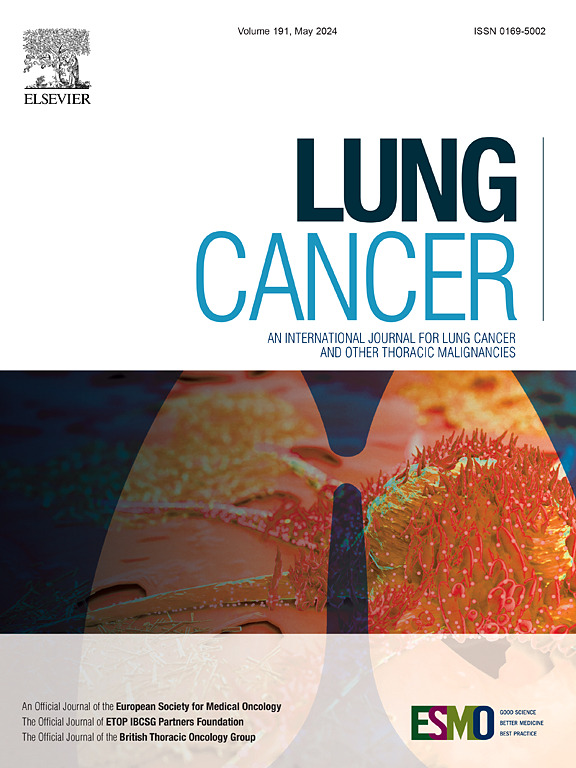From data to prediction: Digital chest drain insights into postoperative recovery after lung cancer surgery
IF 4.5
2区 医学
Q1 ONCOLOGY
引用次数: 0
Abstract
Objective
Prolonged air leak is one of the major complications following lung cancer surgery and objectively measured digital drainage data have been investigated as predictive factors. With this scoping review, we aim to provide a comprehensive overview of risk factors, derived from digital drainage data, for predicting postoperative (drainage) course after pulmonary resection in patients with lung cancer.
Methods
MEDLINE and EMBASE were systematically searched for studies that investigated digital drainage data after lung cancer surgery. Systematic reviews, editorials, commentaries, and reports in languages other than English were excluded. Data on general study information, characteristics of the procedures, digital drainage parameters, and clinical postoperative outcomes were extracted.
Results
Twenty-three studies were included, comprising 3,649 patients. Four different digital drainage systems were used. Maximum air flow exceeding 100–200 ml/min (5 studies), variable air leak patterns (3 studies), and less negative intrapleural/differential pressure (7 studies) were associated with prolonged air leak. A mean air flow of <50 ml/min was associated with spontaneous air leak resolution (1 study). However, chest tube management was heterogeneous, with different suction levels and chest tube removal criteria being applied.
Conclusions
Mean and maximum air flow, air leak patterns, and intrapleural/differential pressure derived from digital drainage data can be considered as possible predictors for postoperative prolonged air leak after lung cancer surgery. However, definitive evidence on the use of these predictive factors in a future risk prediction model could not be provided, due to a lack of homogeneity in the chest tube strategies used in the reviewed studies.

从数据到预测:数字胸腔引流对肺癌手术后恢复的洞察
目的探讨长时间漏气是肺癌手术后的主要并发症之一,客观测量数字引流数据作为预测因素。通过这一范围综述,我们的目标是提供全面的危险因素概述,来自数字引流数据,用于预测肺癌患者肺切除术后的术后(引流)过程。方法系统检索medline和EMBASE中有关肺癌术后数字引流数据的研究。排除了非英语语言的系统评价、社论、评论和报告。提取一般研究信息、手术特点、数字引流参数和临床术后结果的数据。结果共纳入23项研究,共3649例患者。使用了四种不同的数字排水系统。最大空气流量超过100-200毫升/分钟(5项研究),可变的空气泄漏模式(3项研究),以及较少的负胸膜内/差压(7项研究)与长时间的空气泄漏有关。平均空气流量为50毫升/分钟与自发空气泄漏解决有关(1项研究)。然而,胸管管理是异质的,采用不同的吸引水平和胸管拔出标准。结论平均和最大空气流量、漏气模式、胸膜内压/压差可作为肺癌术后长时间漏气的预测因素。然而,由于所回顾的研究中使用的胸管策略缺乏同质性,因此无法提供关于在未来风险预测模型中使用这些预测因素的明确证据。
本文章由计算机程序翻译,如有差异,请以英文原文为准。
求助全文
约1分钟内获得全文
求助全文
来源期刊

Lung Cancer
医学-呼吸系统
CiteScore
9.40
自引率
3.80%
发文量
407
审稿时长
25 days
期刊介绍:
Lung Cancer is an international publication covering the clinical, translational and basic science of malignancies of the lung and chest region.Original research articles, early reports, review articles, editorials and correspondence covering the prevention, epidemiology and etiology, basic biology, pathology, clinical assessment, surgery, chemotherapy, radiotherapy, combined treatment modalities, other treatment modalities and outcomes of lung cancer are welcome.
 求助内容:
求助内容: 应助结果提醒方式:
应助结果提醒方式:


